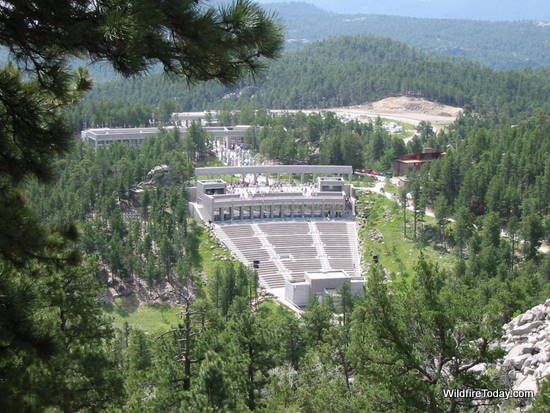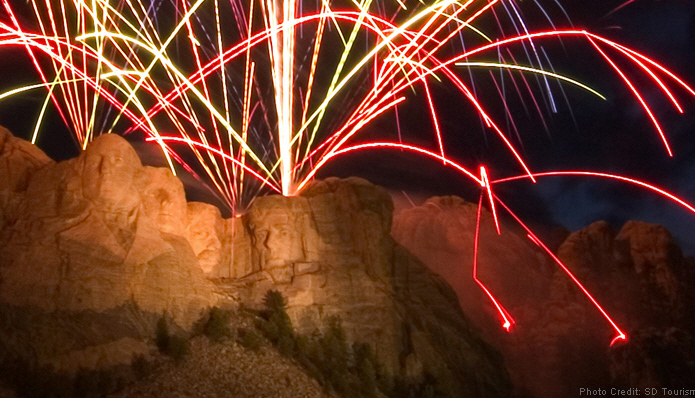Los Angeles County Fire Chief announces retirement.
P. Michael Freeman today announced that he will be retiring in March, 2010. Chief Freeman has served as Fire Chief with the Los Angeles County Fire Department LACFD for 21 years.
On November 18 the LADFD issued a report about the Station fire that lobbed some criticism towards the U. S. Forest Service for their management of wildland fires.
NASA’s Predator UAV flies burn sites in California
NASA provided this information in a press release:
====================
MOFFETT FIELD, Calif. – NASA’s remotely piloted Predator B aircraft, named Ikhana, recently conducted post-burn assessments of two Southern California wildfire sites, the Piute Fire in Kern County and the Station Fire in the Angeles National Forest. Ikhana, an unmanned aircraft equipped with an infrared imaging sensor, completed a seven-hour imaging flight on Nov. 19, 2009 from NASA’s Dryden Flight Research Center, Edwards Air Force Base, Calif.
The Autonomous Modular Scanner, developed by NASA’s Ames ResearchCenter, Moffett Field, Calif., was carried in a pod under the aircraft’s wing. The scanner operates like a digital camera with specialized filters to detect light energy at visible, infrared and thermal wavelengths.
The scanner operated with a new photo mosaic capability requested by the U.S.Forest Service. A photo mosaic provides easier interpretation for the end user, which in the case of an active wildfire, is the fire incident commander.
Traveling northwest of NASA Dryden, the aircraft flew several data collectionroutes over the area burned by the month-long Piute Fire in Kern County that grew to 37,026 acres before it was contained in July 2008. The burn area is located in the Sequoia National Forest and on Bureau of Land Management public land near Lake Isabella.
Ikhana then traveled southeast to fly image collection routes over the arson-caused Station Fire. It burned more than 160,000 acres in the Angeles National Forest northeast of Los Angeles after being ignited on Aug. 26, 2009. The scanner collected images that will indicate the severity of devastation within the fire area. Another use of the images is for the U.S. Forest Service’s Burned Area Emergency Rehabilitation, or BAER.
The Forest Service uses BAER to reduce further damage to land made unstable by fires, rather than replace what is burned. The BAER data are derived using multi-spectral data available from the Autonomous Modular Scanner on the aircraft. The processes can be changed mid-mission to enable improved collection of critical information, either in mapping active fires or assessing post-burn severity.
The post-burn images collected by the scanner were transmitted through a communications satellite to NASA Ames, where the images were superimposed over Google Earth and Microsoft Virtual Earth maps to better visualize the locations. The images then were made available to the Forest Service for initial assessment of the damage caused by the fires and rehabilitation required.
Scientists prove mega-droughts occurred
By studying mineral deposits in caves, scientists have proved that extended droughts, or “mega-droughts” have occurred hundreds of years ago. The researchers took core samples of deposits left by dripping water in caves, and studied them much like scientists study tree rings to determine fire history.
Their analysis in caves in the Sierra Nevada in California determined that one of the droughts they detected lasted 140-years around the year 1100. The pattern of droughts seems to be associated with rapid climate warming.
Bushfires wreaking havoc in Australia
From The Trumpet:
Thousands of homes are threatened by huge wildfires sweeping across eastern Australia. Record temperatures and persistent winds have combined to make this the worst bushfire threat in 100 years in New South Wales, just months after the country’s most devastating wildfire disaster to date.
The record heat has kindled fears of a repeat of February’s cataclysmic fires in Victoria that killed 173 people and consumed more than 2,000 homes. The conditions have prompted authorities to issue the first “catastrophic” or “Code Red” alert—a new level of warning introduced since the deadly Black Saturday fires in February—for parts of New South Wales and South Australia.
“The very hot temperatures we’ve seen across New South Wales right throughout this last week are simply breaking hundred-year records,” said Rural Fire Service Commissioner Shane Fitzsimmons.
In a Code Red warning, residents cannot be forcibly evacuated, but are strongly advised to leave their property because of the dire risk of death, injury and destruction.
Fire expert Kevin Tolhurst said, “What we saw on (Black Saturday) was an extraordinary day from a weather point of view. We are starting to see those sort of days more frequently.”
Bill introduced in Senate to aid in control of pine beetles
From KPVI news:
U.S. Sen. Mark Udall says the insect infestation killing millions of pine trees in the West is 1 of the region’s “biggest natural disasters.”
The Colorado Democrat said Monday he has introduced a bill to give forest managers more ways to respond.
The bill, co-sponsored by Republican Sen. Jim Risch of Idaho, would allow the U.S. Forest Service to identify high-priority areas and expedite analysis of proposed treatments.
More than 2.5 million acres of pine trees in northern Colorado and southern Wyoming have been killed by tiny beetles that burrow under the bark.
Forest managers say the outbreak poses wildfire and public safety risks.
A national management team will help the Forest Service coordinate responses to the outbreak.
As we reported on November 11, one of the NIMO teams has been activated to assist in battling beetles.
Fewer inmates could hamper fire suppression in California
The state of California is under a court order to reduce their prison population by 40,000 people, from 150,000 to 110,000. In order to comply, Governor Schwarzenegger is seeking legislation to implement alternatives to state incarceration, such as house arrest or utilizing local jails.
A reduction of this size in low risk inmates will mean there will be fewer prisoners available to staff the state’s Type 2 inmate crews. When working on a fire an inmate earns $1 per hour, much less than a CalFire employee, so replacing the crews with CalFire firefighters is not an option in a state with major financial problems.
The reason the court ordered a reduction in the prison population was to improve the treatment of physically and mentally ill inmates. They labeled the care so poor that it violates an inmate’s constitutional rights.




